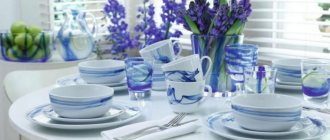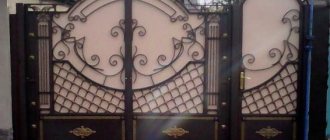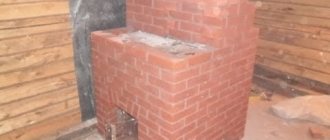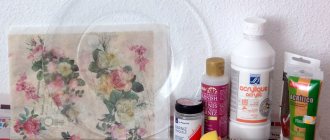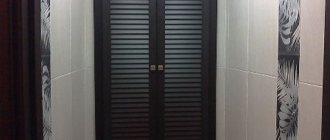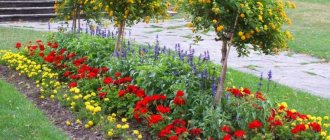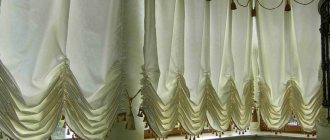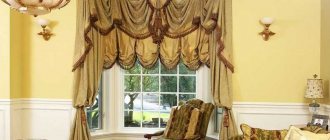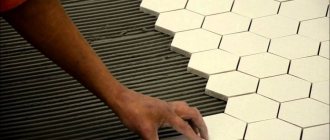Since ancient times, people have paid attention to the beauty of nature. The desire to decorate one’s primitive life and make it cozy led to the fact that the home began to be decorated with various natural elements. It was the skin of an animal underfoot, drawings on the wall, colored stones, shining metal and much more. Centuries later they began to paint plates, spoons, and bowls. Each region had its own types of tableware painting.
The emergence of Khokhloma painting
Near the old Trans-Volga forests near the Uzola River there are Russian villages - Khryaschi, Kuligino, Semino, Novopokrovskoye, Khokhloma. The dishes, painted with various gilded designs, originate from here.
Unfortunately, it is not possible to accurately establish the beginning of the appearance of Khokhloma painting. After all, all the dishes were made of wood, quickly wore out, were thrown away or thrown into the oven, like an ordinary log.
Products from the 19th century have survived to this day. But, judging by historical papers, the fishery arose in the 17th century.
The unique Khokhloma technique - painting on a gold base with black paint and cinnabar - is found in ancient Russian art.
Features of Khokhloma painting
Craftsmen have their own secret on how to “golden” kitchen utensils. A simple method of coating dishes with gold has survived to this day:
- the dishes were thoroughly rubbed with tin powder;
- covered with drying oil;
- heated in an oven;
- under the influence of high temperature, the drying oil turned yellow, the tin was visible through it, and the effect of gold was obtained.
It is believed that this method of painting dishes belongs to the Old Believers. Previously, in remote villages there were many fugitives who suffered persecution for the “old faith.” Among them were masters of icon painting and book miniatures.
Khokhloma patterns
Inexpensive utensils for everyday use can be recognized immediately. It was made with special stamps from a raincoat mushroom or a felt piece of fabric; the patterns turned out to be elementary, but did not lose their beauty. On such products numerous diamonds, spirals and leaves are visible.
More expensive dishes were painted more skillfully. The compositions were created by hand with a brush. There is much more work involved. The masters drew:
- berries (raspberries, strawberries, rowan);
- fantastic birds;
- flowers (cornflowers, clover, violets).
This is how painted spoons, plates, mugs and much more were created.
The main colors characteristic of Khokhloma painting are red (cinnabar) and black (soot). But to make the drawing come to life and bloom, brown, green, blue, orange and yellow shades were added to the products.
Types of painting
Gradually, from household items, Khokhloma products became souvenir gifts or decorations, and not cheap ones at that.
There are main types of tableware painting:
- “Horse” - the main composition - criul - is superimposed on a silver background. Next, droplets, tendrils, and curls are added to it in red and black.
- “Under the background” - first, the silhouette of the ornament is drawn, and the background is filled with black paint.
There can be a variety of types of ornaments on the dishes:
- “Grass” - the emphasis is on drawing small and large blades of grass.
- “Gingerbread” - inside the masterpiece there is a drawn geometric figure. It can be a rhombus, a square, a circle. It is painted with berries, flowers and grass.
- “Kudrina” - a design in the form of golden leaves and flowers in the style of curls is applied to a red or black base.
Khokhloma is an amazing work of art, despite the dark colors, it emanates warmth and joy.
History of Zhostovo painting
Another famous type of tableware painting is Zhostovo painting. It is famous for the fact that for almost two centuries they have been decorating one thing - this tray. The village of Zhostovo is located in the Mytishchensky district near Moscow.
In the 18th century, in the Urals, where the Demidov metallurgical plants were built (Nizhny Tagil, Verkh-Neyvinsk, Nevyansk), a craft arose - painted metal trays.
The birth of such a fishery near Moscow was caused by several important factors:
- The Russian serf master Khudoyarov discovered a recipe for “crystal” varnish; it did not crack on copper, wood and iron.
- Start of production in St. Petersburg of unusually shaped trays with interesting designs.
- Opening of F. N. Vishnyakov’s workshops in Zhostovo in the 1820s. Here they produced varnished and painted papier-mâché items: trays, boxes, snuff boxes, boxes, and vintage boxes.
The products were made in villages near Moscow - Troitsky, Novoseltsev, Ostashkov. In the village of Zhostovo alone there were 22 workshops. The items were very beautiful. They depicted landscapes, winter threesomes of horses, summer walks, and tea parties at the table. But, unfortunately, these gizmos turned out to be fragile and impractical.
Main types of fishing
Artistic painting is usually called patterns applied with paint for the purpose of decoration. And this can be called one of the oldest types of folk art. The first objects found with elements of painting date back to the 18th century. It is known for certain that people knew how to paint with patterns much earlier, as this is mentioned in ancient chronicles.
Toys, kitchen utensils, chests, sleighs, and the hut itself - all this is only a small part of the items that were decorated by folk craftsmen. In the old days, people were limited in traveling long distances; the technique of applying patterns, the composition of paints and other secrets that the master passed on to his students remained in one separate region.
And the ancient Russian painting, characteristic of this area, was recognizable by its unique style of drawing. It is this feature that gave the names to all currently known trends in Russian folk art.
For a long time, people had no other material at hand other than wood, so painting on wood became one of the most extensive in Rus'. Today, art historians identify the following schools of ancient painting:
- Mezenskaya;
- Khokhloma;
- Gzhel;
- Zhostovo;
- Fedoskino;
- Gorodets;
- palekh;
- Severodvinskaya;
- Prikamskaya
Today, all these types and schools of Russian folk painting exist, since there are masters who managed to preserve the ancient manner and technique. Their product is popular and is often purchased as a gift or as a souvenir. How much do we know about history just by buying a beautiful thing?
The appearance of Zhostovo iron trays
Osip, the son of Philip Vishnyakov, decided not to make papier-mâché anymore, but took up the production of iron trays. The demand for trays was just increasing. They were used both for interior decoration and for their intended purpose. Zhostovo trays were seen in drinking establishments, famous Moscow tea houses, taverns, hotels and merchant houses. The collections of Spanish and British kings can boast of the presence of Zhostovo trays.
Demand creates supply, and in 1960 the Zhostovo painting factory was founded.
Secrets of mastery
Observing the long and painstaking process, you can see how the craftsmen still follow the ancient technique.
- Zamalevok. The basis of the future pattern. Sketches of the future drawing are made on the prepared surface with diluted paint.
- Tanezhka. Colored shadows are applied with translucent paints. A visible volume of flowers is created and shady areas of plants appear.
- Gasket in color. This is the most important stage of Zhostovo layer-by-layer painting. The appearance of the bouquet is formed, the entire composition is lightened or darkened, and important small details are determined.
- Glare. Thanks to this action, volume and light appear, the set of features and mood are well conveyed.
- Drawing. The final part of the work on the image. The artist applies small but significant details by hand.
- Binding. The bouquet seems to extend under the background of the product. Thin stems and tendrils magically emerge into a single whole and merge with the background.
- Cleaning the edges of the tray. The side of the tray is decorated with all kinds of patterns. Without this, the work will seem unfinished.
- Mirror shine. Using chalk powder, rub the tray with your palms until it shines, then rub it with paraffin, this makes the product shine even more.
Zhostovo trays have existed for many years, but among them there is not one similar to the other.
Features of the painting
The background is usually black, in rare cases red, blue or green. The artist paints several trays at once.
The main focus is a floral bouquet, in which small wildflowers and large garden flowers are alternately drawn.
Patterns are drawn with gold powder diluted in transparent varnish or turpentine, or gulfabra - white paint mixed with varnish, sprinkled with aluminum powder.
According to their meaning, trays are divided into two groups: for interior decoration and for household purposes.
Types of equipment
Design artists use various types of painting techniques in their work. One of the most complex and time-consuming technologies is fresco. To create it, use mineral paints diluted in water and apply them to wet plaster. It is important to immediately place the selected pattern on the wall correctly.
This requires a high level of skill as a graphic designer. Therefore, fresco is rarely used in interior decoration.
The next option is oil painting. Works made using this technique make it possible to reproduce a wide range of colors and successfully realize the artist’s plans. However, it must be taken into account that oil paints are applied in a continuous layer and disrupt the self-ventilation of the surface on which they are applied. Therefore, in rooms where such painting is applied, it is necessary to prevent the formation of condensation, avoiding temperature changes. In addition, the shiny surface interferes with the normal perception of the applied image.
Another type of decor used is painting using adhesive paints. The basis of such paints is animal glue and warm water. Sometimes, to make the paint moisture-resistant, alum is added to its composition. But this paint composition complicates the work, since it is quite viscous.
Quite often painting using the wax painting technique is used. To perform it, two methods are used: hot and cold. With the hot method, pigment is rubbed onto wax paint, then this composition is melted and applied using a heated tool. In the second method, they work with a brush, using special emulsions.
Gorodets painting
Refers to one of the Russian types of tableware painting. Gorodets painting originates in the 19th century near the town of Gorodets in the Nizhnegorsky Trans-Volga region, on the left bank of the Volga. This is an ancient Russian fortress city. It all started with spinning wheels, the special feature of which was the bottom and comb.
Carriages, ladies, horsemen, soldiers, dogs - all this decorated the bottom of the spinning wheels. The figurines were cut out of a different type of wood and inserted into the corresponding hole.
Gorodets painting took 50 years to form. Children's gurneys, chairs, and boxes were painted. The peak of the fishery development occurred in 1990.
LiveInternetLiveInternet
Mezen painting Mezen wood painting or palaschel painting is a type of painting of household utensils - spinning wheels, ladles, boxes, bratins, which developed by the beginning of the 19th century in the lower reaches of the Mezen River. The oldest dated spinning wheel with Mezen painting dates back to 1815, although graphic motifs of such painting are found in handwritten books of the 18th century made in the Mezen region. In terms of style, Mezen painting can be classified as one of the most archaic types of painting that survived into the 20th century. The objects are densely dotted with a fractional pattern - stars, crosses, dashes, made in two colors: black - soot and red - “earth paint”, ocher. The main motifs of the geometric ornament - solar disks, rhombuses, crosses - resemble similar elements of triangular-notched carving.
YandexGoogleWiki Polkhov-Maidan painting Polkhov-Maidan painting is one of the youngest artistic crafts in Russia. It got its name from the large village of Polkhovsky Maidan in the south of the Nizhny Novgorod region. Almost every family here makes and sells wooden painted toys. The Polkhov-Maidan toy, or as the masters themselves call it “tararushka,” appeared in the late 1920s. Since the 1960s, residents of the village of Krutets, located near the village of Polkhovsky Maidan, began to make a similar toy. The main motifs of the patterns of this painting are flowers: rose, poppy, chamomile, tulip, rosehip. There is also a plot painting. Most often this is a rural landscape with a river, houses, a church and a mill on the bank, as well as the obligatory red dawn in the sky.
YandexGoogleWiki Pizhemskaya painting Pizhemskaya painting has been known since the 17th century. One of the oldest paintings of the Russian North. The northern Pechora River and its tributaries Tsilma, Pizhma and others are places where in the 19th and early 20th centuries. there was a small center for graphic painting. The formation of the style of Pizhem painting was strongly influenced by the handwritten tradition of the Old Believers since the time of Avvakum. There were entire dynasties of copyists of pre-Nikon books, known throughout Pechora; They marked the beginning of a kind of Pizhem painting. Pizhem painting was done with watercolors - red, green, yellow, black. The main Pizhem painting is a geometric pattern made with black paint (soot using larch resin) in the form of rhombuses, crosses, dots, etc., with a slight addition of red and green paint.
YandexGoogleWiki Guslitsky painting Guslitsky painting dates back to the 17th century. This painting existed until the 20th century, when the handwritten book was supplanted by the printed one. Guslitsa has long been the name of the Moscow region in the southeastern part along the Guslitsa River, which flows into the Moscow River (the territory of part of the modern Orekhovo-Zuevsky and Yegoryevsky districts of the Moscow region). In Guslitsy, icon painting, cult copper-cast plastic, and sewing developed. In the 60-70s. XIX century In the settlement of Abramovka, the underground Old Believer printing house of the peasant E.P. Piskunov functioned. The art of copying and decorating books was widespread in the Guslitz area. The Guslitsky singing manuscripts were especially famous. The “Guslitsky” style of book design developed by the last quarter of the 18th century. The specificity of the painting is shining colors: blue, light blue, pink, turquoise, combined with abundant gilding.
YandexGoogleWiki Rakul painting Rakul painting appears in the first half of the 19th century in the village of Ulyanovskaya, located at the confluence of the Rakulka river with the Northern Dvina (now Krasnoborsky district of the Arkhangelsk region). The ornament of the Rakulka painting is very close to the graphics of the miniatures of the famous Vygov manuscripts - liturgical and instructional books produced by the Old Believers. The Rakulka paintings are usually dominated by black and golden-ocher colors, which are accompanied by rich green and brown-red. The color scheme is very strict and harmonious, the plasticity of the elements is laconic. The elements of the Rakul ornament are large, their shape is limited by a clear black outline. Small decorative elements - vignettes and veins are done in black or white: white is predominantly used to depict leaf veins running along a rich color background.
YandexGoogleWiki Sheksninskaya gilded painting “Sheksninskaya gilded” is one of the traditional paintings of the Russian North. It decorated peasant household items and was distributed over a small area - in the southern part of the Sheksninsky district of the Vologda region. Local residents called the painting “gilded”. This name entered the scientific circulation of the newly opened center of folk paintings. The painting is graphic, its color scheme is based on a combination of red, gold and black, traditional for ancient Russian icon painting. Bizarre plants with strange leaves, flowers and fruits, on the branches of which sit proud birds with an eagle look and a tail, sometimes turning into a floral pattern - Here are the main motives of this painting. The origins of Sheksninskaya gilding have roots in ancient Russian culture, reminiscent of the ornaments of icons and handwritten books.
YandexGoogleWiki Khokhloma painting Khokhloma is a decorative painting of wooden utensils and furniture, made in red, green and black tones on a golden background[1]. When painting, it is not gold, but silver-tin powder that is applied to the tree. After this, the product is coated with a special composition and processed three or four times in the oven, which achieves a honey-golden color, giving the light wooden utensils a massive effect. The painting looks bright despite the dark background. To create a picture, colors such as red, yellow, orange, a little green and blue are used. Also, the color of gold is always present in the painting. Traditional elements of Khokhloma are red juicy rowan and strawberries, flowers and branches. Birds, fish and animals are often found.
YandexGoogleWiki Boretskaya painting Boretskaya painting is a Russian folk art craft, painting on wood. It has existed since the 18th century. Initially, there was one center for painting - the village of Borok (Shenkursky district) in the middle reaches of the Northern Dvina River (it arose on the banks of the Dvina when the Dvina region was settled by Novgorodians in the 11th-12th centuries). The most commonly used colors in painting: red, green, brown, orange, yellow. The ornament consists of rhombuses, circles, droplets, and triangles. All elements are outlined in black. The symbol of Boretsk painting is the Tree of Life. A huge flower with a straight stem, around which flowers, birds, berries, and graceful leaves are depicted. The composition could be based on genre scenes: tea drinking, festivities.
YandexGoogleWiki St. Petersburg painting St. Petersburg painting arose based on the study of trays created in the 19th century in St. Petersburg. Characterized by special sophistication. White flowers with golden leaves on a black background. Leaves and flowers are painted with special, translucent strokes. A special atmosphere is created in St. Petersburg - the city of white nights. The main motifs of the design are flowers: daffodils, peonies, daisies; the composition is characterized by grace and dynamism. A special technique can be considered the active use of the background as an additional visual element. White and gold translucent strokes are placed so that the emerging background creates a unique atmosphere of mystery. Nowadays it is a little-known form of household art. And at the end of the 19th - beginning of the 20th centuries, white, translucent flowers with golden leaves began to bloom on the black background of the trays.
YandexGoogleWiki Gorodets painting Gorodets painting is a Russian folk art craft. It has existed since the mid-19th century in the area of the city of Gorodets. Bright, laconic Gorodets painting (genre scenes, figurines of horses, roosters, floral patterns), made in a free stroke with a white and black graphic outline, decorated spinning wheels, furniture, shutters, and doors. In Nizhny Novgorod paintings, two types can be distinguished - Pavlovsk and Gorodets paintings. Gorodets painting originates from carved Gorodets spinning wheels: figures were cut out of a different type of wood and inserted into a recess of the appropriate shape. Inserts made of dark bog oak stand out in relief on the light surface of the bottom. Having only two shades of wood and a simple tool, folk craftsmen turned the surface of the bottom board into a real picture.
YandexGoogleWiki Zhostovo painting Zhostovo painting is a folk craft of artistic painting of metal trays that exists in the village of Zhostovo, Mytishchi district, Moscow region. It is believed that Zhostovo painting adopted the tradition of the Demidov family to paint tin trays, which was widespread in the Urals, namely in the Tagil and Vyisky factory villages. The Demidov breeders introduced this trade there. The appearance of the Zhostovo painted tray is associated with the surname of the Vishnyakov brothers. The history of Zhostovo and Zhostovo craft dates back to the beginning of the 19th century, when in a number of Moscow region villages and hamlets of the former Troitskaya volost (now Mytishchi district of the Moscow region) - Zhostovo, Ostashkovo, Khlebnikov, Troitsky and others - workshops arose for the production of painted lacquered items from papier-mâché . The main motif of Zhostovo painting, like Tagil painting, is a flower bouquet.
YandexGoogleWiki Gzhel painting Gzhel is one of the traditional Russian centers for the production of ceramics. The broader meaning of the name "Gzhel", which is correct from a historical and cultural point of view, is a vast area consisting of 27 villages united in the "Gzhel Bush". “Gzhel Bush” is located approximately sixty kilometers from Moscow along the Moscow-Murom-Kazan railway line. Now “Gzhel Bush” is part of the Ramensky district of the Moscow region. Before the revolution, this area belonged to Bogorodsky and Bronnitsky districts. The name “Gzhel” itself has Baltic roots and refers more to the natural features of the region than to the process of firing products in pottery production. The word “Gzhel” is closest to the ancient Prussian sound of the word “shrub”, which, with some differences, has taken root in all Baltic languages.
YandexGoogleWiki
The article uses the works of illustrator Mila Losenko
What other types of Russian paintings exist?
Veliky Ustyug mob GoogleYandex Vladimir painting GoogleYandex Volkhov painting GoogleYandex Vyatka painting GoogleYandex Karelian painting GoogleYandex Kemerovo painting GoogleYandex Kiev painting GoogleYandex Kursk painting GoogleYandex Lipetsk painting GoogleYandex Onega painting GoogleYandex Permogorsk painting GoogleYandex Petrikovskaya painting GoogleYandex Polkhovsko -Maidan painting GoogleYandex Puchuzhskaya painting GoogleYandex Murals of the Arkhangelsk Territory GoogleYandex Murals of Nizhny Novgorod edges GoogleYandex Tagil painting GoogleYandex Ural-Siberian painting GoogleYandex Shenkur painting GoogleYandex
Motives for painting
The most common elements of Gorodets painting are flowers and animals. Such images exude comfort and peace.
Painted spoons, furniture and dishes in the joyful Gorodets style refreshed and enlivened the interior.
Flower painting is the simplest to perform. There are several types of ornament:
- “Bouquet” - applied symmetrically, present mainly on dishes or cutting boards.
- “Garland” - one or two flowers are located in the center, from which smaller flowers and leaves spread in all directions. Bread bins, dishes, and boxes are painted with this pattern.
- “Rhombus” is a type of garland. There is a flower or several in the center, and the leaves and buds become smaller as they approach the tops of the diamond. And they are located on the imaginary edges of the figure. Such images were used to decorate chests, benches, and cabinets.
- “Flower stripe” is a relic from the days of spinning wheels. This is a repeating ribbon pattern of flowers of the same size, diluted with leaves. Decorate voluminous products.
- "Wreath" - similar to a "flower stripe". The difference is that it closes around the edges of the lid or dish.
In the floral painting there are images of a bird and a horse. They are usually drawn inside a flower garland. Elements of Gorodets painting found their place in large things: panels, sleighs, dishes and boxes.
The images can be very different: dashing horsemen, scenes with tea drinking, beautiful birds, pretty girls with dogs, exotic lions and leopards. The most common type is a proud horse or a warlike rooster.
Contours on dishes
Painting objects with dots has its own sequence in work. To learn how to make beautiful things using this technique, we will conduct a short master class and at the end we will provide several pattern diagrams.
So, first of all, we select the surface that we will paint.
Usually they paint dishes, bottles, cups, plates, boxes, figures, plastic surfaces of computer accessories, keyboards and mice, laptop covers, leather surfaces of passport covers and so on.
Before starting work, the surface must be degreased with a cotton swab containing alcohol or ordinary wet wipes. It is most convenient to work with glass , because on the reverse side you can attach a sketch of a drawing on paper and draw along the lines.
For example, MK "Painting glasses for a wedding."
We will need ordinary glasses, tracing paper, a pen, cotton pads and swabs, contour paint for glass and ceramics.
A pattern is drawn on tracing paper and secured to the inside of the walls with water or tape. Apply drops along the contours of the pattern.
Related article: Crocheted rope basket handbag
You can draw arbitrarily on opaque surfaces, and in order to achieve the correct geometric shapes, you need to carefully draw lines manually or using stencils, cutting out the desired patterns from paper, be it a straight line or a bend, and attaching them with tape. Now you can paint along the edges.
If your product will have patterns with repeating fragments, then the use of stencils and templates is mandatory; prepare the necessary forms in advance.
Spot painting with contours can be combined with lines and other ready-made designs. Cover the entire space or just some part of the item. Frame it with a frame, make a background for a central item, or give it volume.
Drawing errors are corrected with cotton pads, swabs moistened with alcohol or wet wipes.
History of Gzhel
One of the ancient pottery districts includes about 30 villages. It's called Gzhel. It is located near Moscow near the Gzhelka River. Rich deposits of clay were discovered in these places.
Gzhel was mentioned for the first time in written documents dating back to 1339. It was a profitable volost and was the property of princes and kings.
In the 18th century, Gzhel became a Russian center for majolica production. A century later, Gzhel began producing semi-faience, painted with cobalt and covered with a transparent glaze. Closer to the 20th century, Gzhel craftsmen made masterpieces from fine earthenware and porcelain, decorating it with floral and geometric patterns.
Gzhel painting
This type of painting got its name from the village of Gzhel, on the outskirts of which there were deposits of pottery clay. In these parts, almost all the peasants were hereditary potters, great experts in their craft. They made dishes, clay toys and figurines, and tiles for lining stoves. In the middle of the 18th century, it was possible to develop a formula for Russian porcelain, the basis of which was Gzhel pottery clay.
Porcelain sets became a sign of the status of the owner, and it was at this time that the school of Gzhel painting began to take shape. Basically, complex floral patterns were applied, blue, black, and gold paints were used. The product was covered with enamel, painted and hardened in an oven. In modern Russia, it has been possible to preserve the technology of making Gzhel painting.
Return to contents
Subject of the drawing
The painted dishes of Gzhel reflect events occurring in urban and rural life, as well as natural phenomena. The drawings are divided into three main groups:
- Vegetable. Here all the vegetation has a stylized appearance with basic features. You can see berries, blades of grass, cuttings, flowers and leaves.
- Ornamental patterns. Original and stylized drawings in which the association and self-expression of the artist are visible. It is made with ornamental nets - “antennae”, “blades of grass”, “droplets”, “combs” and “pearls”.
- Subject painting. These are sleigh rides, fairs and seasons.
Gzhel is a whole stylistic movement, not just patterns. Used in the production of ceramics, clothing and interior design.
In this miraculous way, Gzhel masterpieces appear “like fairy-tale birds” and fly all over the globe. Therefore, the blue bird in Gzhel is a brand of modern painting.
Main features of the painting:
- surface glazing;
- cool white background;
- ornament in blue and blue tones;
- complex pattern or design in folk style;
- only handmade.
Thanks to hand painting, each product is a work of art. All drawings are unique.
Is painting in the apartment possible?
Wall painting has been used in a variety of ways for many years now. It is enough just to remember the medieval frescoes depicted in school textbooks and the paintings of ancient times. Today, modern paintings on plain walls confirm the high sense of taste of its inhabitants.
It is a mistaken belief that to use artistic painting you must have a huge house. With a small, interesting pattern, it is quite possible to decorate in an original way a boring gray wall in the hallway, or any other room chosen for renovation, right down to the living room.
Technologies used in the modern world and high-quality materials make it possible to turn any dull surface of one tone into an unsurpassed work of art. The most important thing is that you don’t have to complete special design courses or be a born artist.
